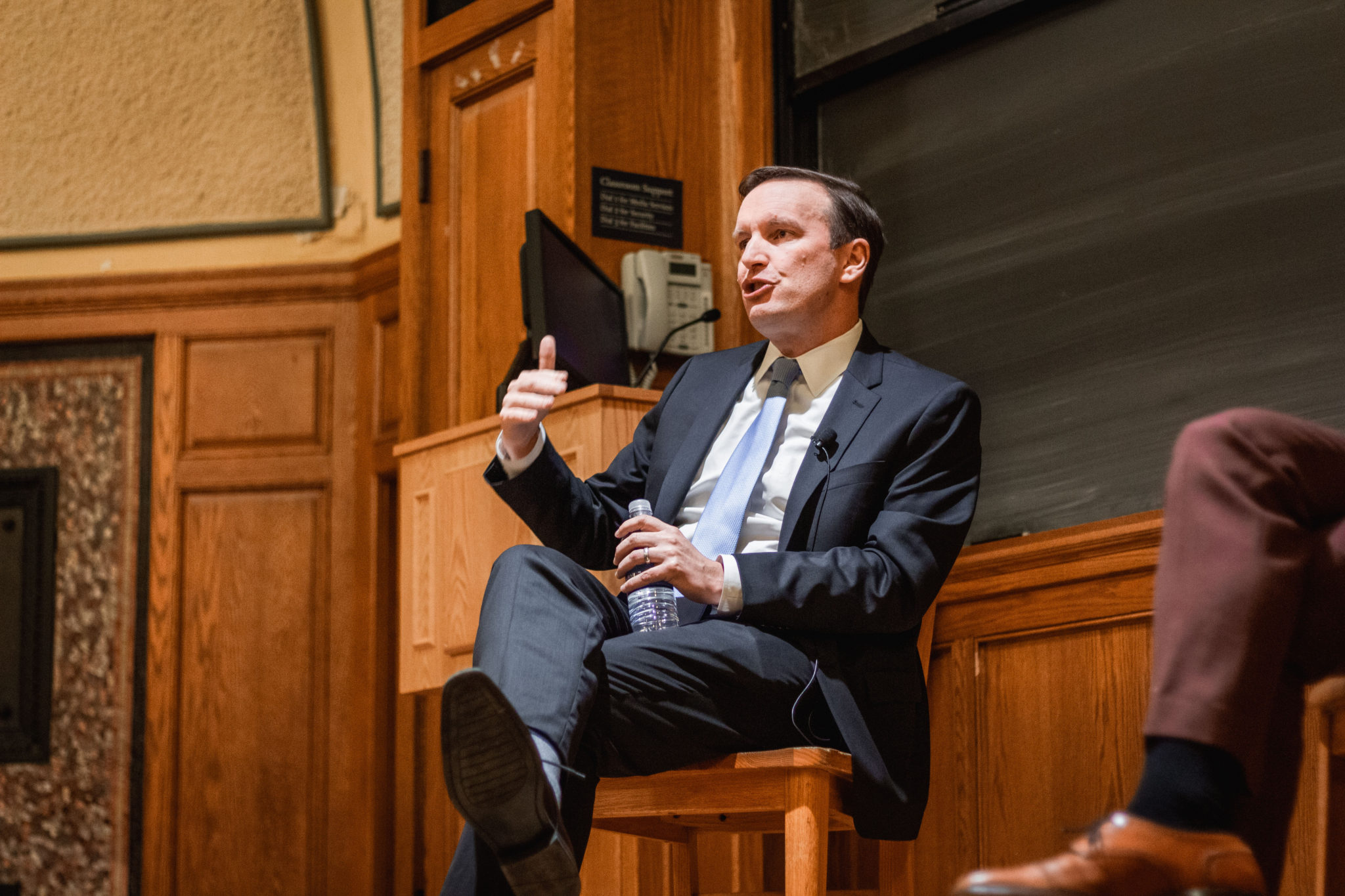
March Madness is a time when many Americans are glued to their television screens in hopes of catching the next buzzer-beating shot. Although the Division I men’s basketball tournament ended Monday, the National Collegiate Athletic Association is being watched closely for what some call the exploitation of college athletes.
Sen. Chris Murphy, D-Conn., released a report last week called “Madness, Inc.: How everyone is getting rich off college sports — except the players.” The report detailed how the Division I men’s basketball tournament produces over a billion dollars in revenue for coaches, schools and business executives while college athletes receive no compensation.
“The ever-growing commercialism of college sports has made a lot of money for a lot of people,” Murphy’s report stated. “Yet, as the athletes provide the product that has fueled this industry, they see a fraction of the revenue they generate, while continuing to face severe penalties for failing to abide by a labyrinth of rules that restrict any meaningful participation in that industry.”
According to the report, the tournament has 100 million annual viewers and generates $1.2 billion in media revenue. College sports programs as a whole are an even bigger industry — one that has collected $14 billion in total revenue.
According to NCAA rules, student-athletes may not receive more payment from their school than the cost of attendance. They also may not play professionally, hire an agent or receive payment for promoting commercial products.
Condemnation of these rules dates back to O’Bannon v. NCAA — an antitrust class action lawsuit that former UCLA basketball player Ed O’Bannon filed against the athletic organization on behalf of Division I football and men’s basketball players after a video game used his college-age likeness and jersey without his consent. The district judge ruled that the NCAA had violated antitrust laws, but the 9th U.S. Circuit Court of Appeals reversed parts of the decision. O’Bannon tried to advance the case to the Supreme Court, but the court declined to hear the case.
Murphy called the debate over player compensation both a labor rights and a civil rights issue.
“You can’t hide from the fact that the majority of the athletes that are playing the big-time sports — football and basketball — are African American, and almost none of the adults who are making money off of them [are],” Murphy said in a CNN interview on April 6.
Others have joined in Murphy’s call for compensating NCAA players, including Executive Director of the National College Players Association Ramogi Huma and Head Coach of the University of Connecticut football team Randy Edsall, according to a statement from Murphy’s press secretary Laura Maloney. Murphy’s office also plans to release future reports on the issue of player compensation in order to spur public support.
Yale officials, however, declined to either endorse or criticize the proposal to pay the University’s student-athletes.
“Our current model provides an exemplary student-athlete experience for all of our student-athletes and any changes to that model cannot come at the cost of that experience for a single student-athlete,” Yale Athletics Director Vicky Chun wrote in an email to the News.
A NCAA spokesperson did not respond to a request for comment.
Yale head basketball coach James Jones also questioned where to draw the line between paying and not paying student-athletes.
“Are we going to treat our basketball players and our football players differently than we do our fencers and our swimmers and our soccer players?” Jones asked the News.
Murphy and Jones both brought up Zion Williamson, the 18-year-old Duke player expected to be the first overall draft pick in the 2019 NBA Draft. However, they had diverging perspectives on what Williamson means to the compensation movement.
The report detailed an incident in which Williamson fell and injured his right knee after his Nike sneakers ripped open during a Duke men’s basketball game against the University of North Carolina this year. The malfunction caused Nike’s stock to go down 1.1 percent, or around $1.1 billion.
“Williamson’s shoe is a symbol of what college sports has become, and what March Madness embodies,” the report stated. “Big-time college sports is a business.”
For Jones, however, Williamson symbolizes the epitome of what aspiring college athletes hope to become.
“The experiences young men and women get from playing their sport, it’s a wonderful opportunity for them,” Jones said. “There are people who’d almost kill or die to be in [Williamson’s] shoes, to be almost God-like on a college campus for a year and to have those experiences.”
The NCAA tournament ended on Monday after the University of Virginia won its first NCAA title.
Nathalie Bussemaker | nathalie.bussemaker@yale.edu
Siddarth Shankar | siddarth.shankar@yale.edu







